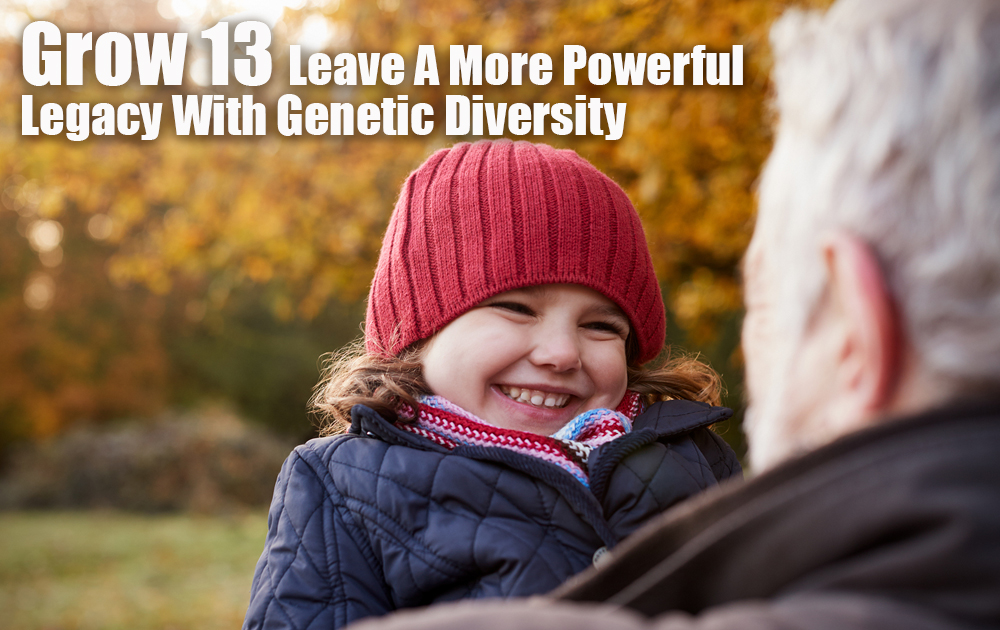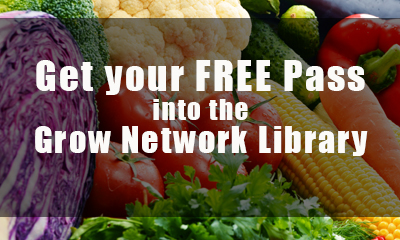In 2002, scientists discovered something unexpected in Southeast Michigan—a beautiful, iridescent green and scarlet insect that had never before been seen in the United States. This is one reason why genetic diversity is so important!
Beautiful, but deadly.
This jeweled beetle had a particular taste for ash trees. Since it was non-native, it had no natural predators here in the United States. And, in the past 14 years, it has destroyed hundreds of millions of U.S. ash trees in nearly 30 states—and threatens the 8 billion+ ash trees that remain.
Now, ash can be used to make tonics and astringents, and it has a few edible properties … but it’s certainly not the most popular cultivar among homesteaders. Not by a long shot.
What ash does provide us with, however, is a really valuable object lesson: This is what can happen to one particular species if the wrong bug or plant disease enters the scene.
It’s why diversity is so important in our food supply. Imagine how history would have changed if potatoes had been just one of many staple crops back in mid-1800s Ireland.
Unfortunately, we’ve come to rely so heavily on centralized agriculture that we’ve forgotten many of the heirloom fruit and vegetable varieties that gardeners used to preserve in their own backyards …
… The varieties that were bred to overcome the challenges of a particular region …
… Or for big, beautiful fruits and stunning flavor …
… Or to withstand long-term storage, like the squash I grow today and keep for use throughout the winter and spring.
Those traits sound good, don’t they? So, where can you get your hands on these seeds today?
The truth is more than a bit horrifying.
Recent studies estimate that, over the last century, we lost as much as 94 percent of our heirloom vegetable varieties.
This loss is largely due to the rise of centralized agriculture, which means people no longer have the same vital need to grow their own food.
But, you and I recognize the truth that we lost more than just vegetables in those 100 years.
We also lost the work of our ancestors’ hands … and significant buffers against our own food insecurity.
According to the Food and Agricultural Organization of the United Nations, we had 75 percent less plant-based genetic diversity in 2000 than in 1900.
How can we stop this destruction and reclaim the diversity (and security) of our food supply?
Watch this video chapter of Grow: All True Wealth Comes From the Ground to find out—and to learn how you can leave your own descendants the most powerful legacy of all.
(Video length: 34.30 minutes)
After you watch, I’d love to know:
What’s your favorite heirloom fruit or vegetable variety?
I can’t wait to hear from you!
Click here to get your FREE pass!









COMMENTS(3)
I love hubbard squash. As a child I remembered it growing in the garden. Moved away and
know one seemed to know what it was where I live. Recently got one up north and saved the seeds to pass on to my family and friends here in the south. Yeah!
In the early part of my childhood we lived on the eastern side of Indiana around the mid part of the state. I couldn’t wait until it was apple time. Because around that part of the state there were apple Orchards where you could go and pick your own apples. We always made two or three trips during the season to get apples. The apples were so full of sweet tangy juice it would drip down your chin every bite you took. The taste of those apples is so clear in my mind 45 years later. The apples that are in stores now don’t even taste like apples to me. They often have a metallic or chemical taste to me. Even the organic ones. I do occasionally find some at farmers markets that are pretty good. But there is still something missing. I believe it is the ground. After so many years of inappropriate framing practices the soil has lost so many of the natural vital nutrients that there is no possible way for our fruits and vegetables to taste like they should. I do think many small farmers are doing a better job with the the land now. I see a resurgence in making our food taste like food, and not worrying so much about what it looks like ,how long it will last on the shelf or how far it can be shipped. Taste and health are finally becoming the priority. Not for the food industry at large, but for many smaller companies and individuals it is. It is my hope that one day soon I will bite into an apple and have that memory become a reality, and sweet tangy juice will run down my chin again.
My family had a rhubarb patch behind our garage. This was passed down from my mom’s mom, who got it from her father who had a farm in northern Illinois. It was plenty tart and it took me many years to develop a taste for it. The rhubarb died out years ago and we are forced to shop rhubarb at the grocery. It does not taste at all the same. It seems that farmers have developed strains of rhubarb which are not as tart and to my taste, don’t have much flavor/taste at all.